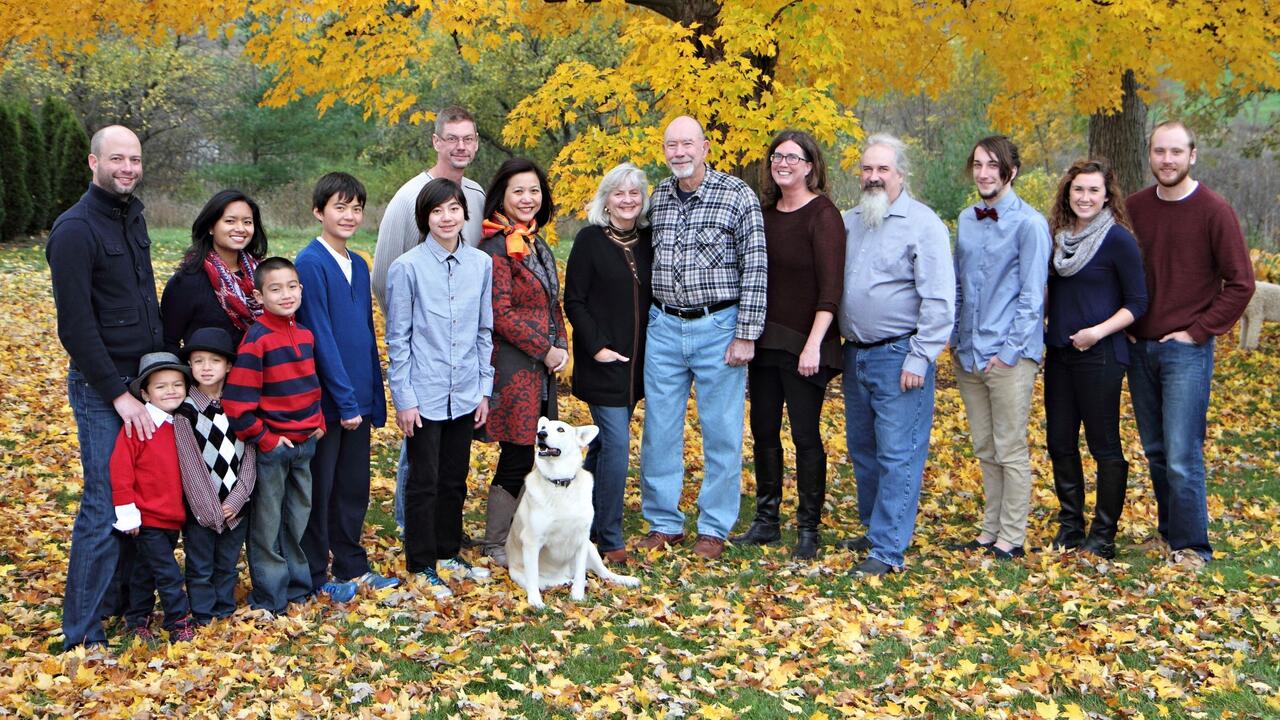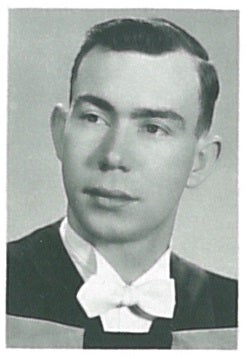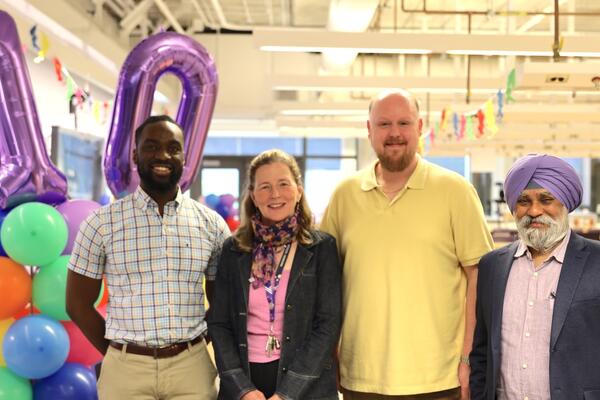
Acknowledging success through giving back
Alumnus donates $1 million for student bursary 65 years after starting at Waterloo Engineering

Alumnus donates $1 million for student bursary 65 years after starting at Waterloo Engineering
By Carol Truemner Faculty of EngineeringIn 1957, Cam Wood was eager to leave his hometown of Beeton, Ontario to work and further his education at the same time.
Barely 17 years old, he found the opportunity to earn both an income and a degree as a student at the University of Waterloo, which had just opened its doors on July 1 of that year.
Cam enrolled in its pre-engineering program and graduated in 1963 with a civil engineering degree plus invaluable work experience through the University’s innovative co-op program, the first of its kind in Canada.

Cam Wood graduated from Waterloo Engineering in 1963.
Sixty-five years after he started at Waterloo, Cam, the founder of The C3 Group, a multi-discipline engineering/contracting organization, and his wife, Nancy, are generously giving back to the University with a $1-million donation.
Each year for the next decade, the Cam and Nancy Wood Entrance Bursary will provide five financially deserving first-year engineering students with $20,000 to help cover tuition, books and living expenses.
“The bursary is intended to ensure students don’t say no to a Waterloo Engineering education because they can’t afford first-year costs,” Cam said.
As a new student himself, Cam acknowledges that while it would have been nice to receive a bursary, he had saved enough from his summer railroad job to get by for the first term.
“Back then, after the first couple of semesters you could make it through with what you earned on your co-op terms,” he said. “With the higher costs today, it’s much more difficult to do that.”
His co-op positions provided him with money to pay for school as well as skills and knowledge he has relied on throughout his career.
After spending a couple of work terms in municipal engineering for the City of Waterloo, he was offered the position of assistant city engineer after graduation.
Employed full time, he became involved in road and utilities construction and after two years left his position to work for a company where he used his experience to launch its division in underground construction.
In 1969, Cam made the decision to start his own business in the municipal utilities field and put everything he owned into the venture.
It didn’t take long for him to decide he far preferred the hands-on part of the job.
“There’s hardly a piece of construction equipment I can’t operate myself today,” he said. “I’d rather drive an excavator or bulldozer all day than do paperwork.”
His company evolved into The C3 Group comprised of related companies in engineering, environmental, geotechnical construction and building sciences.
Supporting the launch of his business located in the Waterloo Region was Nancy, who he met as a student at a Seagram’s Stadium dance and married the same month he graduated from Waterloo.
"We planned things together and went from there," he said. “She looked after the books and lived through all the hardships we had to go through starting the company.”
All three of Cam’s children followed his Waterloo Engineering educational lead: David graduated from mechanical engineering in 1989, Kathy from chemical engineering in 1990 and Rob from systems design engineering in 2001.
Their spouses also have Waterloo degrees: Cynthia (Truong) Wood (BMath ’88, computer science), Dennis Mutti (BASc ’90, chemical engineering; MASc ’95, civil engineering) and Christina (Padamadan) Wood (BASc ’01, systems design engineering).
Three of the next generation of the Wood family have also carried on the Waterloo Engineering tradition.
Cam’s granddaughter, Samantha, graduated from civil engineering in 2014 and his grandson, Michael, completed nanotechnology engineering this year. Michael’s brother, Matthew, is currently a third-year mechanical engineering student.
Many Wood family members work for the C3 Group with two leading member companies.
Numerous other Waterloo Engineering alumni make up the C3 Group’s over 225 employees, including President Murray Gamble (BASc ’85, civil engineering), who joined the company immediately after graduation.
“I appreciate the loyalty and friendship of Murray and all the other C3 Group partners and leaders,” said Cam.
The C3 Group’s connections with Waterloo extend to the use of products developed jointly at the University, including the Waterloo Barrier®, a groundwater containment wall formed of sealable steel sheet piling developed by researchers at the Waterloo Centre for Groundwater Research.
The company has given back to the Faculty in a variety of ways such as hiring Waterloo Engineering co-op students.
Cam, who played defensive halfback for the Waterloo Warriors football team, has assisted players with bursaries and scholarships over the years.
The Cam and Nancy Wood Entrance Bursary is fully supported by Cam’s family, who are helping administer it.
“We feel we’ve been reasonably successful,” Cam said. “We want to acknowledge that success and give back to the University for the opportunities we’ve all had.”
With an impressive nine and counting engineering degrees in his family, Cam didn’t try to persuade any of his children or grandchildren to choose engineering as a career path, but did point out the advantages of it.
“I told them that if you don’t know what you’re going to do down the road, you can’t go wrong if you take engineering because it opens up doors in so many different ways,” he said.

Read more
The Waterloo community comes together to remember, reflect and respond to gender-based violence

Read more
Shop Canadian this holiday season with festive porch plants, fashion-forward apparel, craft spirits and more from Waterloo entrepreneurs

Read more
The Pearl Sullivan Engineering IDEAs Clinic marks a decade of delivering experiential learning embedded in the real world and mentored by industry professionals
The University of Waterloo acknowledges that much of our work takes place on the traditional territory of the Neutral, Anishinaabeg, and Haudenosaunee peoples. Our main campus is situated on the Haldimand Tract, the land granted to the Six Nations that includes six miles on each side of the Grand River. Our active work toward reconciliation takes place across our campuses through research, learning, teaching, and community building, and is co-ordinated within the Office of Indigenous Relations.